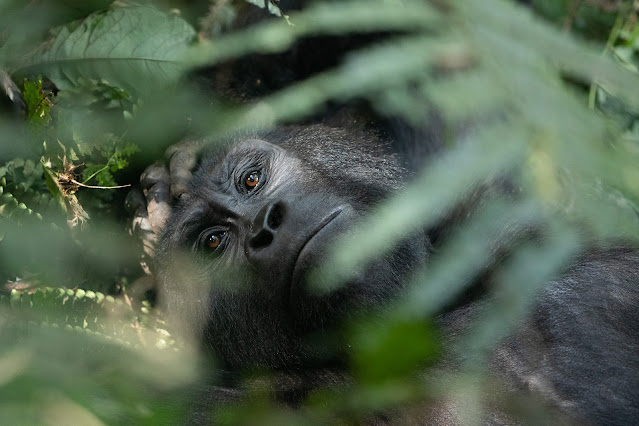Mountain gorillas are fascinating animals with complex social structures. They are rare, living exclusively in the mountainous volcanic rift area of central Africa spanning Democratic Republic of Congo, Rwanda, and Uganda. They are also endangered due to loss of habitat, poaching, disease and human conflict. It is believed that they currently number approximately 1,000 individuals, a significant increase since 1989 when only about 600 existed.
I was thrilled to have the opportunity to see mountain gorillas in Bwindi Impenetrable Forest last year. Even better was that we had permits to visit them on three separate days. Bwindi Impenetrable National Park covers almost 128 square miles of heavily forested and steep terrain in the far southwest corner of Uganda. Though nearly at the equator, the nights are cool and the days moderate due to its high elevation, from about 1,100 meters up to 2,600 meters.
Each day we were assigned a different gorilla group to observe. Rangers who are thoroughly familiar with the gorilla groups, individual gorillas, and the Bwindi forest patiently led us to our assigned family. Here you see part of the Habinyanja group, including the alpha male.
The rangers were armed with rifles to scare off aggressive elephants (which thankfully we never encountered) and machetes to clear paths through the jungle.
These gorilla groups have been habituated to humans and while they don't entirely ignore people, they do carry on with their daily lives in our presence. We were allotted one hour to observe them each day. It seemed to me that they were aware of this time limit as they began to wonder off at the end of the hour.
Here is a sampling of images of the Habinyanja group. We saw them resting,
As one of humans' closest relatives, it is not surprising that mountain gorillas have expressive faces. They are absolutely fascinating to watch. Here the alpha male of the Rushegura group seemed to be pondering weighty matters.

















